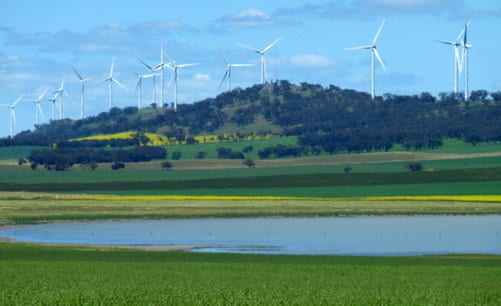South Australia can show the rest of the nation how to build an energy system that makes people’s lives better.
But to get there, whichever party is elected at the March 17 state election, must be committed to a clear target and plan to achieve a fair transition to 100% renewables in the state by 2025.
South Australia already leads the nation in renewable energy and despite the continued bluster from the Federal Government in Canberra, South Australians are proud of it.
Recent polling by the Climate Council found the majority of South Australians wanted the rest of the country to follow our lead. Renewable energy is the pride of South Australia.
But the job isn’t done. South Australians are still too often left at the whim of big gentailers who’ve consistently pushed up the price of power.
That’s why Solar Citizens worked with Nicky Ison from the Community Power Agency on a new blueprint called Repowering South Australia, which not only shows how South Australia can get to 100% renewables by 2025, but also how we can ensure nobody is left behind along the way.
To get there, Repowering South Australia recommends:
- Making South Australia a renewable energy superpower by setting a 100% renewable energy target by 2025 and making a plan to export a further 50% outside of the state through technologies such as hydrogen.
- Supporting low-income households by establishing a publicly-owned non-profit retailer to secure cheap, renewable power.
- Boosting local manufacturing by establishing renewable energy industry precincts in locations where renewable energy hotspots meet energy-intensive industry.
- Working with Aboriginal communities to design a well-funded Indigenous Communities Clean Power Program.
- Giving communities back power by establishing regional community energy hubs that increase community benefit from renewable projects.
A big step forward was made on Sunday to support South Australians currently locked out of the benefits of clean energy. Around 25,000 homes in South Australian public housing will now be part of a connected home solar and battery power station, with another 25,000 low income households to follow.
This program not only makes solar and storage available to people currently missing out, it will eventually reduce grid demand and wholesale power prices across the state. The big question is who will be running the show.
A government or community owned, non-profit retailer could be the retailer managing this world-leading project. This would put power back in the people’s hands and ensure existing gentailers aren’t able to use South Australians’ rooftops to keep gaming the system.
With this virtual power plant, Port Augusta’s solar thermal plant, and a wave of new solar, wind, battery and pumped hydro recently supported by the South Australian government’s Renewable Technology Fund, there is no doubt we are going to eclipse our existing state renewable target of 50% renewables by 2025. (Ed: We already have!).
That’s why South Australians and the renewable industry need to know where South Australia plans to head next and a strong 100% renewable target tells us just that.
In this context, it is maddening that Steven Marshall’s South Australian Liberal Party has committed to scrap the state renewable target in favour of a national target.
With the Federal Government’s national energy guarantee predicted to send new renewable investment off a cliff and the national renewable target largely met, leaving South Australia’s transition waiting on a new national target makes no sense.
Some people might think that South Australia should wait for the other states to catch up before we move any further, but that would leave the job half done.
We can’t risk leaving too much power in the hands of the big gentailers and allow jobs in new storage technologies to go interstate or overseas.
People across Australia and the world have been watching South Australia transform into a world leader in renewables with storage.
By committing to a strong plan for a fair and fast transition to 100% renewables South Australian politicians can give people a reason to keep watching.
Dan Spencer is a South Australian Campaigner with Solar Citizens









